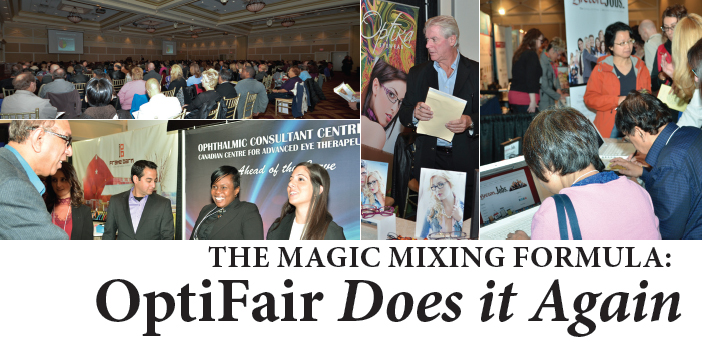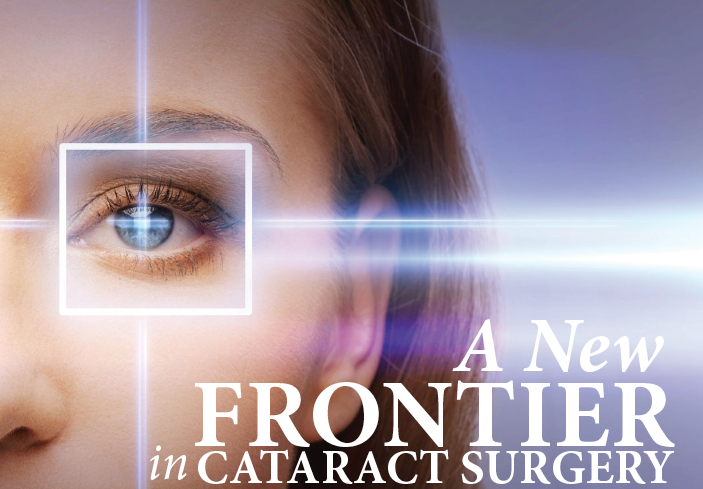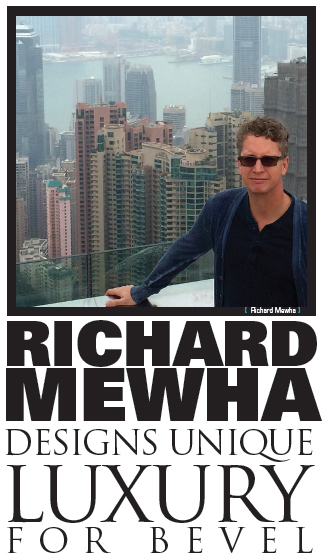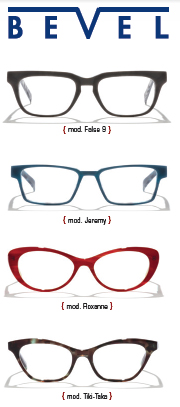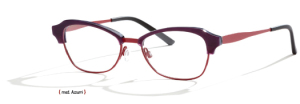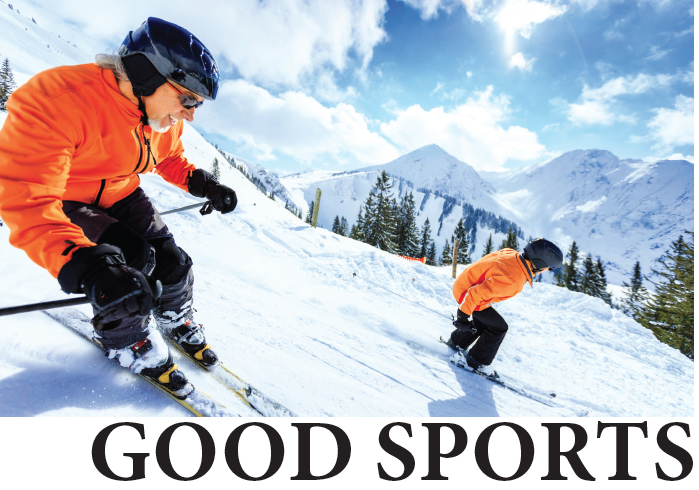
By Paddy Kamen
Physical fitness rules in western pop culture, where professional athletes are superstars and the girth of film actors is under constant scrutiny. Do these cultural values translate into increased physical activity for the average person? It’s hard to know, but there are definitely more sports-equipment stores in Canada than ever before.
The focus on fitness products in the retail world creates an excellent business opportunity for eyecare professionals because ever-cooler and more technologically advanced equipment is the name of the game. Both amateur and professional athletes need eye protection and you are the perfect retailer to provide it.
You’d best start out by asking your patients if they play sports. According to Pat Salamat, Canadian vice president of sales for Liberty Sport, this is the first of the Three I’s: Inquire, Inform and Introduce. After you ask ‘Do you play any sports or engage in solo fitness activities?’ it becomes almost a duty of practice to inform patients of the risks to vision inherent in their sport, and/or the path to better performance through improved optics. The reason this becomes a duty is that over 100,800 Canadians end up in emergency rooms each year as a result of sports-related eye injuries. You sure don’t want a tennis-playing patient claiming that you didn’t let her know that the second-leading cause of sports eye injuries in Canada is racquet sports. Not only should you inform her, you can also introduce the solution if you carry a good selection of sports-specific eyewear.
This feature gives you an overview of the best of the best in sports-protection eyewear. And the cool factor leads the way: just look at this stuff – it’s gorgeous!
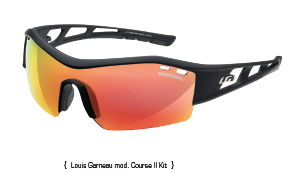 The Louis Garneau company, founded by renowned Canadian cyclist Louis Garneau (with over 150 racing victories globally), knows a thing or two about sports eyewear. Perfect for winter sports, their Nordic Shield, with lift-up lenses that are also interchangeable, offers tremendous versatility, depending on the activity chosen and the prevailing light conditions. The nylon frame resists impact and varied temperatures.
The Louis Garneau company, founded by renowned Canadian cyclist Louis Garneau (with over 150 racing victories globally), knows a thing or two about sports eyewear. Perfect for winter sports, their Nordic Shield, with lift-up lenses that are also interchangeable, offers tremendous versatility, depending on the activity chosen and the prevailing light conditions. The nylon frame resists impact and varied temperatures.
The Course Kit from Louis Garneau is another example of versatile sports eyewear for the all-round athlete. Worn by Quebec-city-based 2014 Ironman Kona, Hawaii winner, Pierre-Yves Gigou, the Course Kit is extremely lightweight, with vented lenses and a frame that helps to prevent fogging. This amazing eyewear works in every light condition and at all temperatures. Cyclists, cross-country skiers and triathletes find it indispensible.
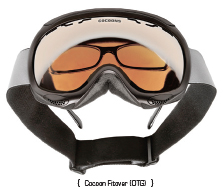 Because not everyone can invest in prescription goggles for winter sports, Live Eyewear presents their stylish Cocoons® fitover snow goggles. “It was time for us to bring our experience in the fitover sunwear category and attention to detail to the table,” says Kieran Hardy, Live Eyewear president. “The public trusts in the Cocoons brand as a global leader in fitover eyewear. Because we consistently deliver the best in fitover performance, quality and value, our new goggles will reward loyalty to the brand.”
Because not everyone can invest in prescription goggles for winter sports, Live Eyewear presents their stylish Cocoons® fitover snow goggles. “It was time for us to bring our experience in the fitover sunwear category and attention to detail to the table,” says Kieran Hardy, Live Eyewear president. “The public trusts in the Cocoons brand as a global leader in fitover eyewear. Because we consistently deliver the best in fitover performance, quality and value, our new goggles will reward loyalty to the brand.”
Cocoons goggles come in a wide variety of styles, each featuring a dual layer, anti-fog lens system with air apertures to eliminate condensation on the internal lens surface. The high-contrast orange lenses offer a glare-blocking silver mirror finish, delivering superior visual acuity.
« These Cocoons retail at a great price point, so there’ll be no question that you’re equipping your customer with the best in technology combined with unparalleled value,” adds Hardy.
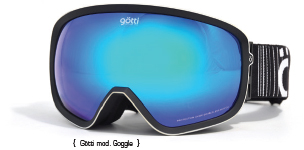 Designer Sven Götti, who hails from Switzerland (another land of snow), turns his keen design aesthetic to light, flexible snow goggles in white, black and yellow, each featuring coloured, mirrored, double-glazed lenses. An anti-fog design for optimum ventilation make these helmet-compatible goggles consistent with their sophisticated finish and dynamic look. We wouldn’t expect anything less than perfection from this prominent Swiss company.
Designer Sven Götti, who hails from Switzerland (another land of snow), turns his keen design aesthetic to light, flexible snow goggles in white, black and yellow, each featuring coloured, mirrored, double-glazed lenses. An anti-fog design for optimum ventilation make these helmet-compatible goggles consistent with their sophisticated finish and dynamic look. We wouldn’t expect anything less than perfection from this prominent Swiss company.
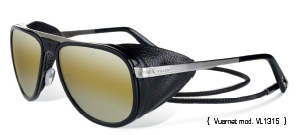 Olympic gold medal ski champion, Jean Vuarnet, lends his name to the famous Vuarnet brand, known for superior eyewear and mineral lenses for all sporting activities.
Olympic gold medal ski champion, Jean Vuarnet, lends his name to the famous Vuarnet brand, known for superior eyewear and mineral lenses for all sporting activities.
“Our bestselling lens, Skilynx, was created in 1960 and used by Jean Vuarnet when he won the Olympics in 1960,” says Marketing Director Kristin Wells-Kelly. “This lens is ideal for all winter sports. We also offer the PX 5000 lens in limited sport frames for mountain climbing and all sports executed in extreme light conditions.”
All Vuarnet mineral lenses are manufactured in their factory in Meaux, France, just outside Paris. Mineral lenses are known for exceptional optical quality: “The optics are much better than polycarbonate and they have a very hard surface, making them resistant to scratching. The 16-hour chemical plating process guarantees that they are shock-resistant as well.” says Wells-Kelly.
Vuarnet has released an updated version of the aviator-style GLACIER sports sunwear made of Mazzucchelli acetate and ultra-light metal with inserted rubber. The leather side shields with a magnetic metal structure allow the shields to be adjusted for better eye protection. The side shields are also removable to meet the needs of city life. Combine the GLACIER with the SKILYNX mineral lenses and you have a match made in heaven.
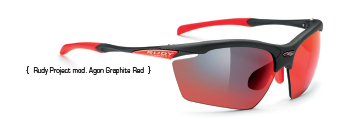 Rudy Project shines with their new ImpactX-2 lenses in Clear to Laser Red and Clear to Laser Brown. These photochromic lenses light your way with 65 per cent better photochromic performance, 25 per cent faster activation and activation behind car windshields. Best of all: they are unbreakable and so protect the eyes in the event of falls or other impacts.
Rudy Project shines with their new ImpactX-2 lenses in Clear to Laser Red and Clear to Laser Brown. These photochromic lenses light your way with 65 per cent better photochromic performance, 25 per cent faster activation and activation behind car windshields. Best of all: they are unbreakable and so protect the eyes in the event of falls or other impacts.
Comfort and perfect vision are aligned in the new high-performance Proflow™ Carbonium from Rudy Project. Developed with input from professional athletes and biometric engineers, this eyewear gives cutting-edge advantages to athletes, including a patented ‘flying’ temple design, which permits minute adjustments for maximum comfort and works together with the all-new Dorsal Stabilizers™, a system which ensures perfect alignment and directional stability for most head shapes, thus preventing the glasses from pitching down and placing excess pressure on the nose and ears.
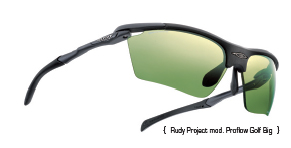 Also from Rudy Project, the Agon is an ultra-technical glass, worn by the 2013 Tour de France® Green Jersey winner, Peter Sagan. Available with interchangeable lenses, the Agon features adjustable temple tips and nose pieces that secure the glasses with a precise and custom fit. An aerospace alloy is used in their manufacture. The half-rim structure guarantees a broad field of vision and air circulation is ensured by adjustable ventilation slits on the lenses.
Also from Rudy Project, the Agon is an ultra-technical glass, worn by the 2013 Tour de France® Green Jersey winner, Peter Sagan. Available with interchangeable lenses, the Agon features adjustable temple tips and nose pieces that secure the glasses with a precise and custom fit. An aerospace alloy is used in their manufacture. The half-rim structure guarantees a broad field of vision and air circulation is ensured by adjustable ventilation slits on the lenses.
Both the Proflow Carbonium and the Agon are Rx-able, via digital backside surfacing and can be made with no-line bifocals. Congrats to Rudy Project for constantly pushing the envelope in favour of athletes.
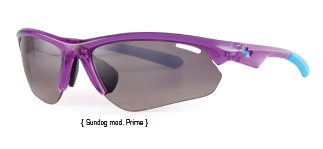 Sundog Eyewear is leading the pack with TrueBlue™ lens technology, as worn by world ultramarathon champion Ellie Greenwood and LPGA Superstar Paula Creamer. This blue light-filtering technology is based on the research of physicist and inventor Dr. James Gallas, whose company, Photo Protective Technologies (PPT), is a leading innovator in photoprotection using melanin. Sundog has signed an exclusive global agreement with PPT for the next generation of melanin lenses.
Sundog Eyewear is leading the pack with TrueBlue™ lens technology, as worn by world ultramarathon champion Ellie Greenwood and LPGA Superstar Paula Creamer. This blue light-filtering technology is based on the research of physicist and inventor Dr. James Gallas, whose company, Photo Protective Technologies (PPT), is a leading innovator in photoprotection using melanin. Sundog has signed an exclusive global agreement with PPT for the next generation of melanin lenses.
TrueBlue lenses have demonstrated proven results in golf, running and fishing. Athletes will appreciate superior glare reduction, maximum visual clarity, enhanced definition and improved performance. The eyewear frames that hold this lens technology include Bolt, Clutch and Prime. All frames are made with Max Flex RILSAN® and use Megol temple tips and adjustable Megol nose pads to provide non-slip comfort. Check out Sundog for guaranteed performance at a price point that won’t break the bank.
 Spy has the ultimate outdoor package for people who enjoy fishing, made of Grilamid® with polycarbonate toric lenses. The new Angler shows up with Trident™ polarization, Hytrel™ nose pads and temple tips, and small temple openings handy for attaching a cord. This virtually indestructible eyewear is oversize, and definitely masculine.
Spy has the ultimate outdoor package for people who enjoy fishing, made of Grilamid® with polycarbonate toric lenses. The new Angler shows up with Trident™ polarization, Hytrel™ nose pads and temple tips, and small temple openings handy for attaching a cord. This virtually indestructible eyewear is oversize, and definitely masculine.
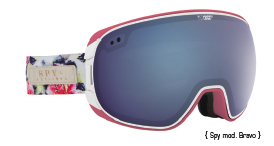 Bravo is another first for Spy, a mid-size snow goggle that rocks the slopes with high-performance features like a one-handed lens changing system, a free bonus lens, scoop venting and anti-fog coating, along with silicone ribbing on the strap to keep the goggle in place on the helmet.
Bravo is another first for Spy, a mid-size snow goggle that rocks the slopes with high-performance features like a one-handed lens changing system, a free bonus lens, scoop venting and anti-fog coating, along with silicone ribbing on the strap to keep the goggle in place on the helmet.
Both the Angler and Bravo are available with Spy’s new Happy Lens™ technology. In addition to enhancing colour and contrast, the Happy Lens induces positive physiological and psychological changes by blocking short-wave blue light and UV rays, while allowing in the sun’s long-wave blue light. Exposure to long-wave blue light is associated with increased alertness and positive mood. Spy has a patent pending on the technology behind Happy Lens. As one of the oldest independent eyewear brands in North America they are proud to be constantly innovating.
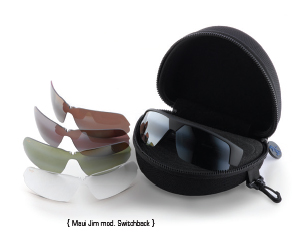 Maui Jim’s PureAir styles have been extremely well received by everyone who has tried them for climbing, fishing, racquet sports and running. They also work well for more rugged sports, especially those that require undistorted views through ultra-clear lenses or need the great visual definition and depth perception that comes from the use of three rare earth elements in the PolarizedPlus2 lens technology. The Grilamid TR90LX frames are light, thin, flexible, durable and easily fit under helmets. The frames have performance features like embedded rubber in the temples and adjustable rubber nose pads that enhance stability and performance.
Maui Jim’s PureAir styles have been extremely well received by everyone who has tried them for climbing, fishing, racquet sports and running. They also work well for more rugged sports, especially those that require undistorted views through ultra-clear lenses or need the great visual definition and depth perception that comes from the use of three rare earth elements in the PolarizedPlus2 lens technology. The Grilamid TR90LX frames are light, thin, flexible, durable and easily fit under helmets. The frames have performance features like embedded rubber in the temples and adjustable rubber nose pads that enhance stability and performance.
Also from Maui Jim, the Switchback full-wrap eyewear is receiving stellar reviews from cyclists around the globe. This is Maui Jim’s first style with easily interchangeable lenses. Superior ventilation and incredible comfort are augmented by the gripping fit that make the frames stable for both cyclists and runners. The Switchback comes with a PolarizedPlus2 coloured lens and a clear lens, with other lenses available.
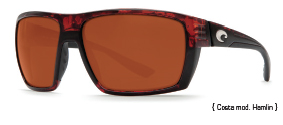 Hardcore fishermen started Costa back in 1983 in order to create sports sunwear that truly met their needs. Today, the company they founded is going strong, making the clearest sunwear for fishing, boating, biking and running.
Hardcore fishermen started Costa back in 1983 in order to create sports sunwear that truly met their needs. Today, the company they founded is going strong, making the clearest sunwear for fishing, boating, biking and running.
The Hamlin model from Costa was named after esteemed Captain Ron Hamlin, who is known for releasing more than 25,000 billfish in his career. These co-molded Hydrolite frames, designed in his honour, offer a lightweight but durable fit.
The Inlet, also from Costa, is made from durable nylon, with spring hinges for a snug, custom fit. Both the Inlet and the Hamlin perform best with Costa’s patented 580™ lens technology, which blocks yellow light from entering the eye, creating razor-sharp colour enhancement and achieving the highest polarization level possible. The lenses eliminate reflective glare and protect against harmful UV rays. Available in 580G (glass) or 580P (plastic), lens colours include gray, copper, blue mirror, green mirror and silver mirror. Costa also offers a specialty sunrise lens colour, ideal for low light situations.
 Liberty Sport Eyewear is a name well known to both professional and amateur athletes in a wide variety of sports. Pat Salamat, says they focus on sports protection and sports performance sunglasses. “With the number of sports-related eye injuries increasing we offer the widest range of sports protective goggles that surpass ASTM (formerly known as American Society for Testing and Materials) standards. From hockey to baseball and soccer, we have them all covered. Not only are they safe, but they are now considered cool gear.”
Liberty Sport Eyewear is a name well known to both professional and amateur athletes in a wide variety of sports. Pat Salamat, says they focus on sports protection and sports performance sunglasses. “With the number of sports-related eye injuries increasing we offer the widest range of sports protective goggles that surpass ASTM (formerly known as American Society for Testing and Materials) standards. From hockey to baseball and soccer, we have them all covered. Not only are they safe, but they are now considered cool gear.”
Liberty’s performance eyewear for motorcycling has been very positively reviewed in the biking press. “We use technology which includes Dry Eye cups for bikers who suffer from this condition. They prevent wind and debris from irritating the eyes,” notes Salamat.
Switch Vision, another offering from Liberty, is an interchangable lens model that comes with both polarized and low-light amber lenses, which are attached to the frame with magnets. Salamat says these are perfect for the varied light conditions one encounters in outdoor sports, including hiking, rafting and biking. Replacement lenses for specific sports such as skiing and golf are also available and can be purchased separately. Switch was very well reviewed by the Colarado Mountain School, which offers courses including rock climbing and ski mountaineering.
Every frame that is sold by Liberty is Rx-able.
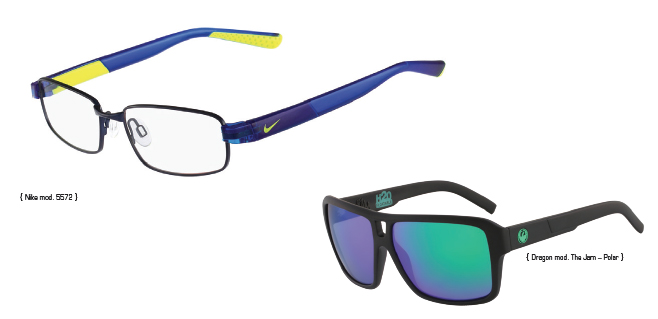 Marchon brings two exciting brands to the sports-specific eyewear category with Dragon and Nike. Dragon’s optical collection is inspired by athletes and designed for the sophisticated consumer with a passion for action sports. Their sponsorship roster has grown to include some of the best surfers, snowboarders, moto riders, and wakeboarders in the world. For surfers like Shane Dorian, there’s nothing to compare to Dragon’s Made in Italy floatable sunglass collection, specially formulated from lightweight, low-density, injection-molded thermoplastic material.
Marchon brings two exciting brands to the sports-specific eyewear category with Dragon and Nike. Dragon’s optical collection is inspired by athletes and designed for the sophisticated consumer with a passion for action sports. Their sponsorship roster has grown to include some of the best surfers, snowboarders, moto riders, and wakeboarders in the world. For surfers like Shane Dorian, there’s nothing to compare to Dragon’s Made in Italy floatable sunglass collection, specially formulated from lightweight, low-density, injection-molded thermoplastic material.
“Dragon’s floatable shades are designed to stay afloat in the ocean, pool or lake,” says Kristina Simeone, marketing manager for Marchon Canada. “Complete with Performance Polar and oleophobic and hydrophobic lens coatings, Dragon’s H20 Floatable sunglasses are the answer to never losing your shades in the water again.” The collection features three styles, in 10 colour-options.
Also from Marchon, Nike’s Young Athlete Suns offer the same quality and performance expected from Nike Vision but in kid-sized versions of the most-coveted adult styles. The collection features Carl Zeiss optics with an advanced lens technology developed specifically to protect young eyes from damaging sun rays. The frame technology focuses on durability, grip, coverage, adjustability and ventilation, making this eyewear perfect for the young soccer, baseball, tennis or basketball players in the family. Models include Spirit and Mercurial.
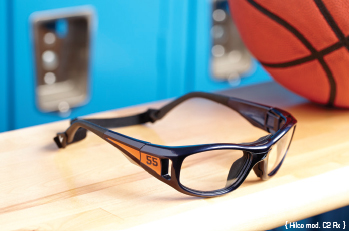 C2 Rx sports goggles from Hilco take the prize for eye protection on the field or the court. Offering an expanded field of vision – up to 20 per cent better, thanks to their V-Port technology – the goggles also provide superior ventilation and comfort. Athletes must be able to depend on visual clarity and comfort, both of which are found in spades in the C2 Rx, but the important extra bonus is protection for those sports where balls are flying fast and hard: baseball, lacrosse, tennis, basketball, soccer, squash and racquetball. The Hilco C2 Rx is approved by ASTM for ball speeds of up to 60 mph.
C2 Rx sports goggles from Hilco take the prize for eye protection on the field or the court. Offering an expanded field of vision – up to 20 per cent better, thanks to their V-Port technology – the goggles also provide superior ventilation and comfort. Athletes must be able to depend on visual clarity and comfort, both of which are found in spades in the C2 Rx, but the important extra bonus is protection for those sports where balls are flying fast and hard: baseball, lacrosse, tennis, basketball, soccer, squash and racquetball. The Hilco C2 Rx is approved by ASTM for ball speeds of up to 60 mph.
The C2 Rx is available in a wide choice of colours, sizes and wearing options, with fully adjustable temples with an interlocking strap. Hilco says they ‘think wide’ and they have certainly covered all the bases with this sports goggle.
A well-known sporting goods company once said, ‘Just do it!’ Putting aside any brand reference, I suggest that you ‘do it’ by making sports-specific eyewear part of your commitment to patient safety, comfort and satisfaction. This strategy will also strengthen your relationships with your patients and their understanding that you ‘get’ eyewear in a way the sports equipment retailers do not.
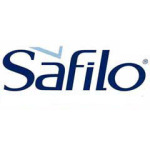
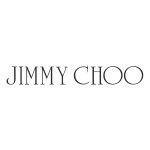 Sàfilo Group and Jimmy Choo have extended their licensing agreement until December 31, 2018, for the design, production and distribution of the Jimmy Choo eyewear collections of sunglasses and optical frames. According to the Italian distributor, this reflects the outstanding growth of the brand’s eyewear business across all major countries, especially in Europe and North America.
Sàfilo Group and Jimmy Choo have extended their licensing agreement until December 31, 2018, for the design, production and distribution of the Jimmy Choo eyewear collections of sunglasses and optical frames. According to the Italian distributor, this reflects the outstanding growth of the brand’s eyewear business across all major countries, especially in Europe and North America.



